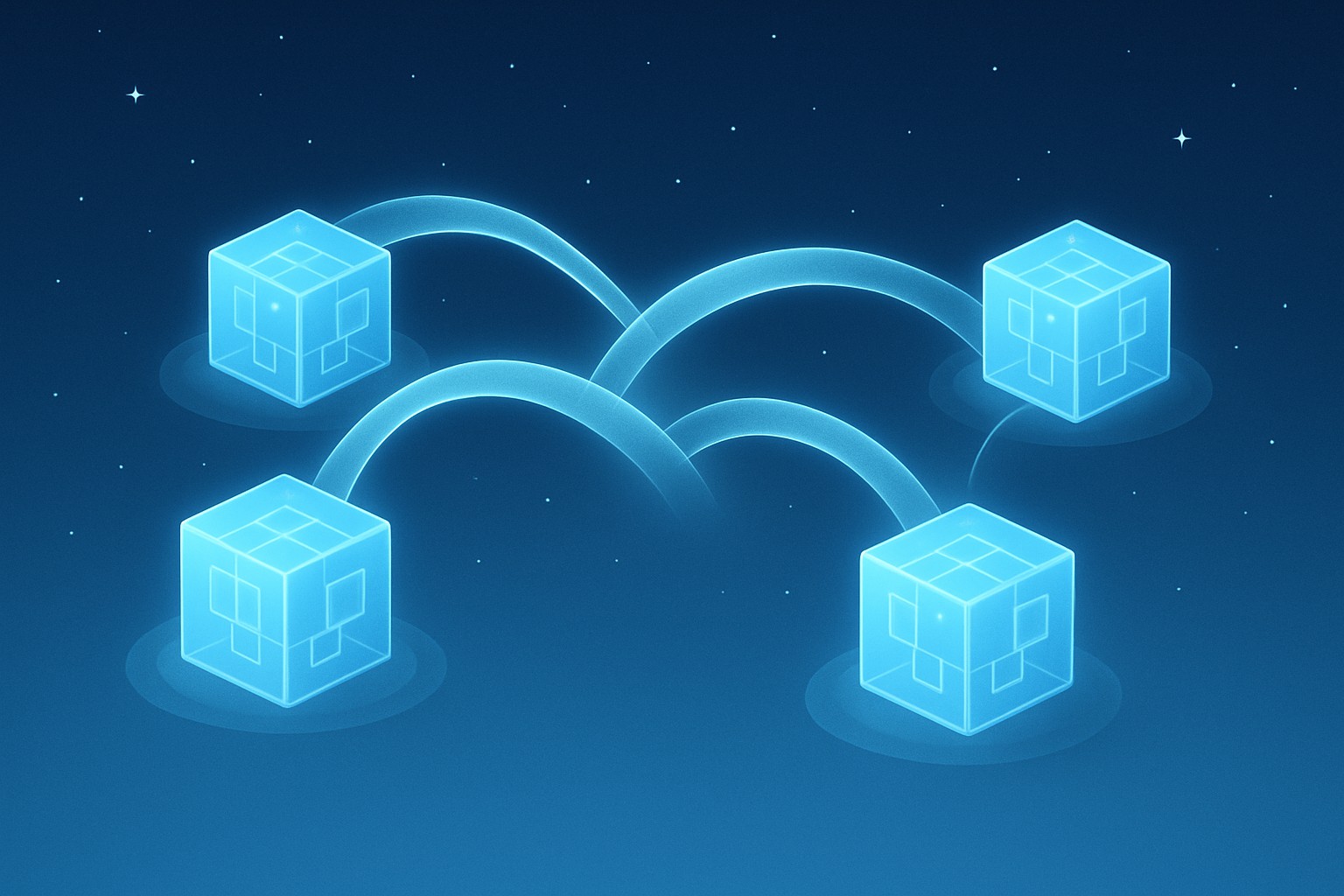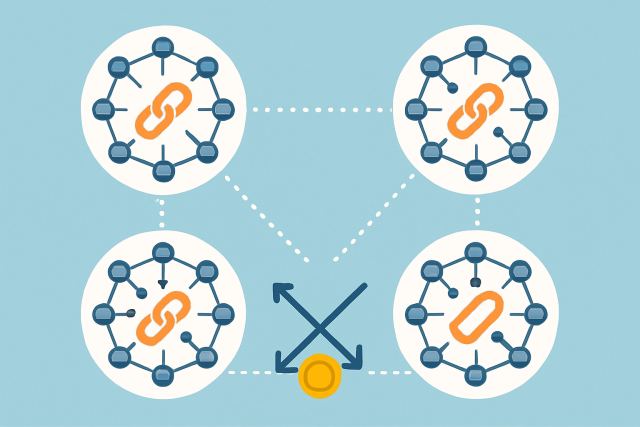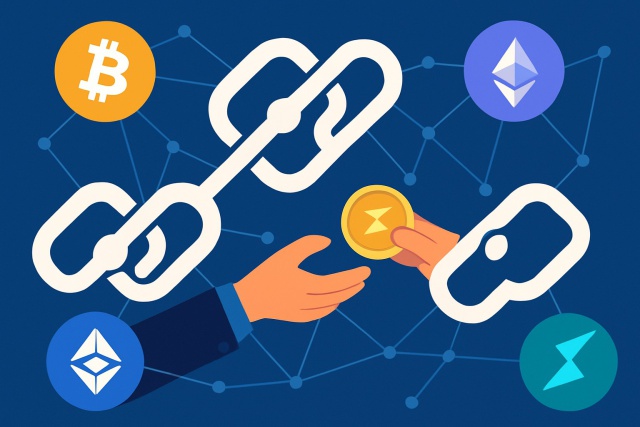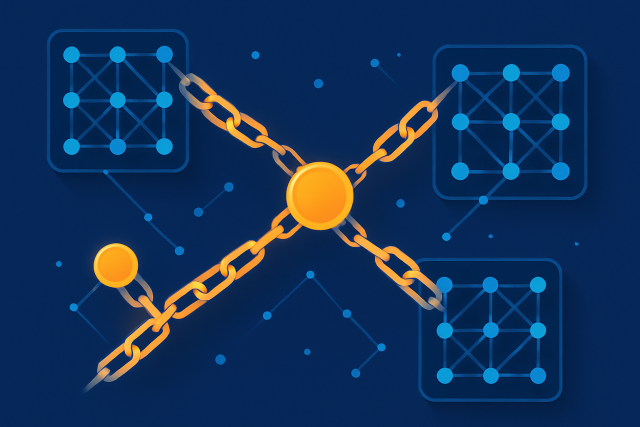LayerZero Protocol Explained Simply


LayerZero Protocol is a state-of-the-art technology that serves as a bridge connecting different blockchains and makes the exchange of messages and assets between them feel as seamless as passing a note in class. This article dives into LayerZero's core concepts and explores why it is a game-changer for blockchain interoperability. It also takes a closer look at how it keeps communication across chains secure
What Does Blockchain Interoperability Really Mean
Blockchain interoperability is basically the magic that lets different blockchain networks chat with each other and swap data or assets without any hiccups.
- Many blockchains run their own show, each sticking to its unique rulebook and data setup.
- Usually, they cannot just hand off information or tokens directly without leaning on some trusted middlemen or bridges.
- Users frequently find themselves juggling through disjointed interfaces, making asset transfers feel more like a hassle than a breeze.
- Centralized bridges often bring along security headaches and become single points where everything could potentially go south.
An Easygoing Introduction to the LayerZero Protocol
LayerZero is an interoperability protocol designed to create a universal messaging layer that connects different blockchains seamlessly. It offers secure and efficient communication, making it easier to build cross-chain decentralized applications while avoiding many common vulnerabilities found in traditional bridges.
- It acts as a universal messaging layer making communication between different blockchains feel surprisingly smooth and seamless.
- The protocol is built to be lightweight so it won’t bog you down with heavy blockchain node resource demands.
- It supports the creation of cross-chain decentralized applications (dApps) that can run effortlessly across multiple chains.
- It helps cut down on a bunch of the security headaches usually associated with traditional centralized oracles and bridge mechanisms.
How LayerZero Works Explained in Plain English
LayerZero’s architecture is built from modular components that work hand in hand to securely shuttle information across different blockchains. It leans on decentralized validation and keeps resource usage on the lighter side, which in turn helps make cross-chain messaging not only speedy but also trust-minimized.
Each connected blockchain runs a LayerZero Endpoint smart contract that sends and receives messages—think of it as the trusty post office handling packages back and forth.
Ultra Light Nodes verify block headers and transaction proofs without running full nodes, making things lighter on resources.
Relayers shuttle transaction data across chains to the right Endpoint, acting as diligent couriers on this digital highway.
Oracles double-check blockchain states to ensure messages come from legit blocks, like gatekeepers who don’t let anything shady slip through.
Once both the Oracle and Relayer give the green light, messages are delivered and executed on the receiving chain—mission accomplished no sweat.
Endpoints as the Little Gateways of Communication
Endpoints are essentially smart contracts deployed on each blockchain connected to LayerZero. You can think of them as on-chain gateways that manage outgoing cross-chain messages and carefully handle incoming ones. When one blockchain wants to chat with another, its Endpoint gets the message all neatly packaged and kicks off the transmission. Once the message lands, the destination Endpoint gives it a thorough once-over to make sure everything’s in order before executing the call.
Ultra Light Nodes and How They Zip Through Message Validation
Ultra Light Nodes provide a neat and streamlined alternative to the traditional full blockchain nodes. Instead of slogging through the entire blockchain by downloading and verifying every bit, they smartly lean on Oracles and Relayers to handle just the relevant block and transaction data. This approach seriously trims down resource consumption without skimping on security, thanks to a clever dual confirmation system.
Oracles and Relayers as Trusty Sidekicks for Confirming Messages
LayerZero teams up with two key players: Oracles and Relayers to make sure messages get verified and sent securely. Think of them as the dynamic duo of blockchain communication. Oracles bring in the cryptographic proof of blockchain states like block headers while Relayers haul the transaction proofs and data to the destination chain’s Endpoint.
Think of Oracles and Relayers as your trusty postal service—they don’t just ship your package; they double-check its authenticity and hustle to make sure it lands exactly where it should, safe and sound, without any unnecessary detours.
Why LayerZero Often Outperforms Traditional Bridges (and a Few Reasons You Might Want to Pay Attention)
- Security gets a solid boost by using a two-party verification system, which smartly reduces the risk of putting all your eggs in one basket.
- Costs come down and message confirmations speed up, thanks to Ultra Light Nodes stepping in for the bulkier full nodes.
- It plays well with a wide array of blockchains, handling both EVM and non-EVM varieties without breaking a sweat.
- Trust assumptions are kept to a bare minimum, making it way harder for any sneaky attacker to pull a fast one on the system.
- Supports genuine cross-chain composability, so dApps can glide effortlessly across multiple blockchains like they’re old friends.
Traditional bridges often rely heavily on centralized validators or tangled systems that can be a security nightmare waiting to happen—think hacks or tricky exploits. LayerZero takes a clever detour with its unique setup. It pairs Ultra Light Nodes with a dual thumbs-up from both Oracles and Relayers. This solution keeps trust at a minimum while remaining impressively scalable. The approach boosts cross-chain communication efficiency and tightens security. It also cuts latency and fees along the way.
Practical Applications of LayerZero in the Real World Where Theory Meets Reality
LayerZero opens the door to building a range of handy applications that rely on secure and smooth cross-chain communication. Developers and users alike can now explore new possibilities in DeFi, NFTs, gaming and governance where assets and data flow freely across blockchain networks
- Letting token swaps happen directly between different blockchains, cutting out the need for those centralized middlemen we all love to grumble about.
- Powering multi-chain decentralized exchanges that pull liquidity from a bunch of different networks, like a well-orchestrated liquidity potluck.
- Making NFT interoperability a reality, so your digital collectibles can freely roam and chat across various chains without feeling cramped.
- Backing multi-chain gaming worlds where in-game assets and currencies flow effortlessly, giving players a seamless experience that’s hard to beat.
- Opening the door to cross-chain governance and voting systems, bringing decentralized decision-making together in one harmonious space.
Possible Challenges and Key Considerations You’ll Want to Keep in Mind
LayerZero offers robust interoperability features though it’s not without its hurdles. It depends on Oracle and Relayer entities meaning there are some trust assumptions baked in—nothing’s ever completely hands-off unfortunately. Juggling support for multiple blockchains adds a layer of complexity for integration and makes things trickier under the hood.
- The trust model depends on the honesty and reliability of Oracles and Relayers, which can sometimes create potential vulnerabilities for attacks.
- Connecting multiple different blockchains is not easy and requires ongoing technical effort along with regular protocol updates.
- Message confirmations can sometimes be delayed due to network congestion or a shortage of available relayers.
- LayerZero faces strong competition from other interoperability solutions, each offering its own set of advantages and disadvantages.
- Developers often experience a learning curve when working with LayerZero's unique architecture and tools, but that is part of the journey.
Getting Started with LayerZero A Friendly Introduction
If you are a developer or user curious about LayerZero a solid way to get your feet wet is by diving into the detailed documentation, joining lively community discussions, or experimenting with testnets.
- Take a peek at the official LayerZero documentation on their website for some detailed technical guides that don’t mess around.
- Dive into the LayerZero developer communities on Discord and GitHub where you can swap ideas and ask those burning questions or even make a few friends.
- Roll up your sleeves and deploy LayerZero-enabled contracts on the supported testnets. There’s nothing like getting your hands dirty to really learn the ropes.
- Browse example projects and open-source repos that showcase cross-chain dApp setups and give you a solid blueprint to work from.
- Check out LayerZero-powered products in the wild to see how these innovations play out in the real world. Sometimes seeing is believing.






